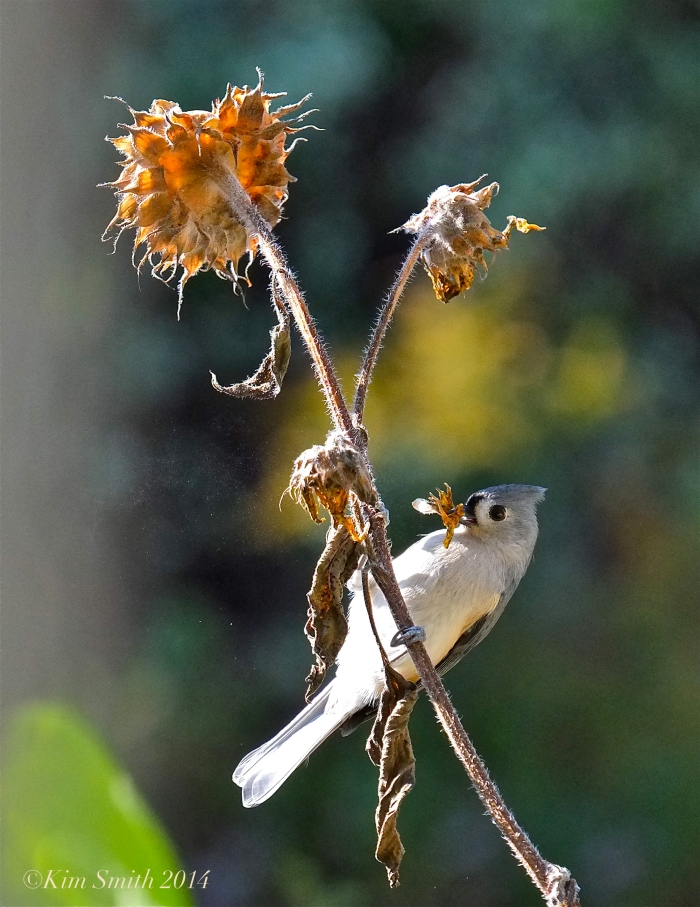 Tufted titmouse ~ Baeolophus bicolor
Tufted titmouse ~ Baeolophus bicolor
In my garden design practice, the topic of deadheading flowers comes up often, especially at this time of year. The habitat garden is designed for people and for pollinators and the objective is to find a balance between the two. Esthetically speaking, to some, a garden only looks its best when every plant is tidily trimmed and every spent flower blossom removed. But to a hungry bird on the wing, an expiring sunflower or cosmos is bird food. Some plants should be deadheaded and pruned however, the next time you get a jones to neaten a plant, take a moment to look at it from the perspective of a songbird.
Black-capped Chicakdee ~ Poecile articapillus
I like a bit of unruliness in the garden and don’t even deadhead cosmos any longer. They will continue to flower whether deadheaded or not. A few weeks ago while working with several of our wonderful HarborWalk volunteers, I was explaining what plants to deadhead and what plants not to deadhead, and why, when at the very moment that I was speaking those very words, three brilliant cadmium yellow goldfinches flew on the scene and began devouring the seed heads of a nearby coneflower!
American Goldfinch Eating Cosmos Seeds
And too, a batch of Echinacea not only provides mid-winter sustenance to hungry birds, the seed heads sure look pretty silhouetted by new fallen snow.




Out spreading life for plants – people -dogs also do this those little burr’s that collect on your pant’s and in the dogs fur…Nice shots! Thanks Dave:-) Kim:-)
LikeLike
Thanks Dave–and people, too–I was recently covered in sticky burrs after filming in the woods.
LikeLike
🙂
LikeLike
Lovely as usual Kim. Nothing like tight and intimate captures. Thank you.
LikeLike
Thank you so much JT.
I hope you and That Nutty Redhead had a great weekend at the Rockport Harvest Festival!
LikeLike
Enjoying the Tufted Titmouse photo Kim. Good to see you today at CATV.
LikeLike
Thanks Kathy–heel quickly!
LikeLike